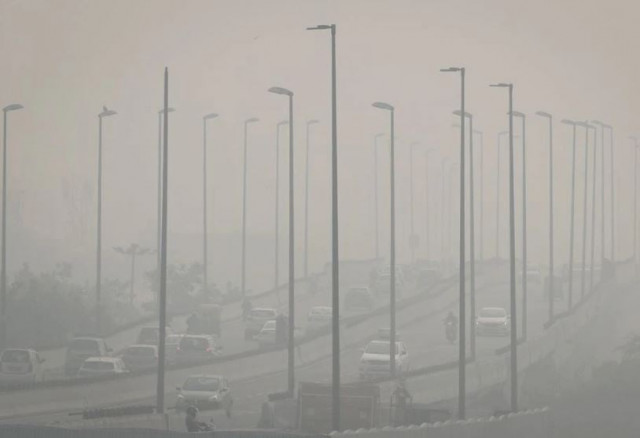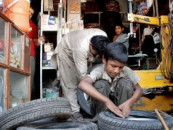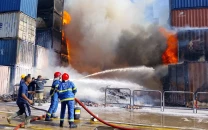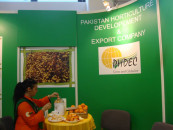Controlling smog and air pollution
Low-grade fuel, especially diesel, used in transport sector causes most of the smog

Pakistan faces significant air pollution and smog mostly in dry and cold months from November to January every year.
The situation in central Punjab has worsened over the past decade as life comes to a standstill during prolonged dry and cold conditions in winter months in major cities like Lahore, Faisalabad and Gujranwala.
When the situation normalises, we forget the agony and wait for its reappearance next year. We have failed to tackle the problem based on scientific principles that other advanced countries did effectively in the past.
Air quality in major cities of Pakistan does not conform to the air quality standards specified in the National Environment Quality Standards (NEQS) and the Pakistan Environment Protection Act 1997.
Recent reports and indicators like the Air Quality Index (AQI) show that Lahore with a reading of 158 is the unhealthy city and Islamabad with a reading of 149 is unhealthy for sensitive people.
Major causes of poor air quality are industrial emissions, vehicular emissions, domestic emissions, construction-related dust emissions, smoke from brick kilns and soot of burning agricultural waste.
Polluted air being dense provides a platform for smog formation in winter months that causes heavy economic losses by disrupting communication besides loss of life due to poor health and accidents.
Routine life is severely disturbed due to poor visibility in the wake of smog and associated disruption to transport, communication, health services and biodiversity, and ultimately human and economic losses.
It has been reported that 43% of smog is due to the use of low-grade fuel, especially diesel, in the transport sector. Pakistan is still using Euro-2 grade fuel as it could not revise its refinery policy since 1997.
Consequently, we could not adopt the clean Euro-4 to Euro-6 fuels. Similarly, the recycling industry also use the degraded fuel for powering iron and steel and other industrial units, which are mostly located in urban areas.
Air pollution is mostly high in urban centres while rural areas are not significantly affected due to less sources of pollution and more open spaces where the pollution is diluted due to increased movement of fresh air.
Smog is the direct result of industrialisation, which is a global problem. Europe faced heavy smog in the early 1950s as a result of industrial revolution.
Similarly, major industrial hubs in the US and Japan grappled with smog in the 1960s and early 1970s because of industrial development.
Air, road and rail transport had been disrupted for weeks and months and citizens used face masks to protect themselves. To control smog, they developed air quality monitoring system and air quality standards and regulations.
Implementation of such laws and strict monitoring has helped them in effectively controlling pollution and the associated smog.
Pakistan is now facing the same situation which advanced countries encountered in the 1950s and 1960s. We must learn from the successful case studies and replicate these tools and techniques for controlling smog in the country.
Pakistan is a member of various forums of the UN Environment Programme at the global and regional levels and, therefore, can access technology and resources for creating clean air.
The Asia-Pacific Clean Air Partnership and Male Declaration on monitoring air quality in South Asia are some of the global and regional initiatives.
The Male Declaration was implemented in the late 1990s in eight South Asian countries after its ratification by the South Asia Environment Programme in its governing council meeting in April 1998 in Male, the Maldives.
Under this declaration, the South Asian countries share the air quality data with member countries for effective monitoring.
Well-equipped air quality monitoring stations were established at the borders of member countries and Pakistan has established two such stations, which still exist along the Pakistan-India border near Bahawalpur, Punjab and Tharparkar, Sindh.
The arrangement worked nicely till its fourth phase that ended in 2012-13. Since then no active phase has been undertaken, disrupting the trans-boundary monitoring system.
This has proved to be an ideal system for air quality monitoring through data sharing and helped remove the blame game over the transfer of air pollution from one country to another in South Asia.
Controlling air pollution
As sources of air pollution are known, their remedies can easily be found through effective monitoring and control.
Good news is the availability of required institutional and legal frameworks at the federal and provincial levels in Pakistan.
Environmental regulations are being enforced by the environment protection agencies (EPAs), although the drive is weak and sketchy.
Besides poor capacity, the lack of required number of air quality monitoring equipment and poor support from the mainstream authorities are the major reasons behind the ineffective monitoring and control of air pollution.
Lack of awareness among communities and poor and delayed actions by the environmental tribunals have aggravated the problem. It has been observed that mostly the environmental tribunals are non-functional due to the lack of quorum.
Delays in disposal of registered complaints have always favoured the violators at the cost of air quality in urban centres. The fines imposed by the tribunals are so low that the violators are encouraged rather than discouraged from polluting the environment.
The air quality monitoring and control system needs to be improved in terms of capacity and enforcement powers. Consistency and continuity of effective air quality monitoring and control must be ensured for the provision of clean air to the citizens.
Way forward
Like other environmental issues, the air quality monitoring is not only cross-cutting but also involves a variety of stakeholders. It may require innovative approaches for a sustainable solution.
The following recommendations may help the policymakers, planners and implementing agencies to chalk out appropriate strategies.
One, identify the stakeholders – both polluters and regulators at all levels.
Two, create awareness through a smart community mobilisation initiative.
Three, prepare an incentivised community involvement programme for the division of work among population in the geographical areas of interest.
Four, build capacity of stakeholders depending on the role they will play in air pollution control and monitoring.
Five, revise rules to not only encourage power-sharing with communities but also facilitate their open-ended enforcement.
Six, figure out economically viable and socially acceptable alternatives to the sources of pollution such as transport, industry, construction, solid waste and agricultural waste.
Seven, devise implementable strategies based on measureable and achievable objectives and outputs.
The writer is PhD in natural resources management and has worked in national and regional air quality regulating and monitoring agencies
Published in The Express Tribune, March 7th, 2022.
Like Business on Facebook, follow @TribuneBiz on Twitter to stay informed and join in the conversation.



















COMMENTS
Comments are moderated and generally will be posted if they are on-topic and not abusive.
For more information, please see our Comments FAQ